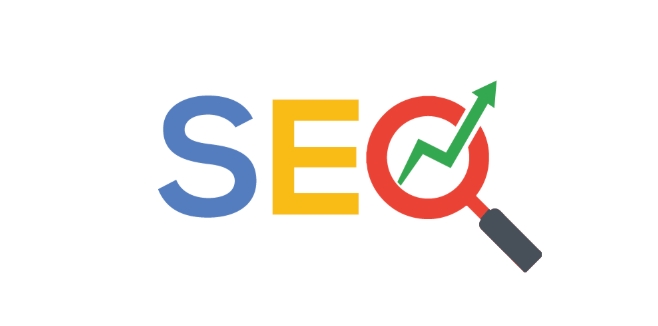Key points of SEO audit include website structure and crawler accessibility, content quality and keyword optimization, page loading speed and mobile experience, external links and brand signal analysis. 1. Ensure that robots.txt and meta robots labels are correct, sitemap submission is normal, internal links are clear, and URL structure is simple, ensuring smooth crawling of crawlers. 2. Naturally embed keywords, avoid pile-up, eliminate duplicate low-quality content, match user search intentions, and have in-depth content length and enrich product page information. 3. Compress images, enable cache, reduce redirection and JS/CSS requests, optimize mobile display effects, and use tools to detect scores. 4. Pay attention to the source of high-quality external links, maintain the diversity of anchor text, clean up negative links, pay attention to brand word mentions, and use tools to analyze the quality of external links. Regular inspection and updates can continuously improve SEO results.

SEO audit sounds quite complicated, but as long as you master the key points, you can quickly discover problems and propose directions for improvement. The core is to start from multiple dimensions such as website structure, content quality, and technical performance to find out the factors that affect search engine rankings.

1. Website structure and crawler accessibility
This is the foundation of SEO. If even search engine spiders can't enter your website, no matter how good the content is, it will be useless.

- Check robots.txt and meta robots tags : Make sure that important pages are not blocked by mistake.
- Check whether the sitemap is submitted correctly : You can confirm whether it is crawled normally in Google Search Console.
- Is the internal link reasonable : The jump between the home page to the subpage and subpage should be clear, so that the crawler can "go" smoothly.
- The URL structure is as simple as possible : for example,
/blog/seo-auditis more friendly than/index.php?id=12345.
Sometimes you will find that some pages disappear in search results, which may not be a content issue, but the crawlers have no chance to see them at all.
2. Content quality and keyword optimization
Content is the lifeblood of SEO, but it is not just written too much, but also written right.

- Are target keywords embedded naturally ? The title, first paragraph, and main text appear appropriately, and do not pile up.
- Is there any duplicate or low-quality content ? If the content of multiple pages is too similar, it will be considered "trash".
- Is the user search intention solved ? For example, if a user searches for "How to learn SEO", you will talk about a lot of definitions, but it will not match it.
- Is the content length deep enough ? Of course, it is not the longer the better, but usually a valuable SEO article is at least 800 words or more.
For example, if you are writing a product introduction page, only parameters are not enough, and you have to add usage scenarios, common questions, user reviews, etc. to increase the weight of the page.
3. Page loading speed and mobile experience
Now Google has clearly defined mobile-first indexing as the main focus, so this part is becoming more and more important.
- Compressed image size : Many websites load slowly because the image is too large.
- Enable browser caching : Reduce duplicate loading time.
- Reduce redirects and JS/CSS requests : Too many will affect rendering speed.
- Test the display effect of mobile terminal : whether the text can be clicked, whether the layout will be messy, and the loading card will not be stuck.
You can use PageSpeed ??Insights or Lighthouse to measure points, and you need to optimize it if you have a score below 60. Some details seem small, such as slower font loading, which will actually affect the overall rating and user experience.
4. External links and brand signal analysis
External links are still one of the important factors in Google's ranking, but the focus is now more on "quality" rather than "quantity".
- Is the backlink source authoritative ? Links from high-weight websites are more valuable.
- Are the anchor texts diverse ? It is all about "click here" and "learning more", and it is easy to be suspected of cheating.
- Are there any negative links that need to be rejected ? For example, spam websites and black hat SEO sites.
- Are brand-related words mentioned ? For example, if someone mentions your brand name but doesn’t have a link to it, it is also a trust signal.
You can use Ahrefs, Moz or Google Search Console to view the current external link situation and determine which ones can be retained and which need to be cleaned.
Basically all that is it. It doesn’t take a day to do a full SEO audit, but it can help you discover many hidden problems. Don’t think about getting it done in one step, regular inspections and updates are the key.
The above is the detailed content of How to do an SEO audit?. For more information, please follow other related articles on the PHP Chinese website!

Hot AI Tools

Undress AI Tool
Undress images for free

Undresser.AI Undress
AI-powered app for creating realistic nude photos

AI Clothes Remover
Online AI tool for removing clothes from photos.

Clothoff.io
AI clothes remover

Video Face Swap
Swap faces in any video effortlessly with our completely free AI face swap tool!

Hot Article

Hot Tools

Notepad++7.3.1
Easy-to-use and free code editor

SublimeText3 Chinese version
Chinese version, very easy to use

Zend Studio 13.0.1
Powerful PHP integrated development environment

Dreamweaver CS6
Visual web development tools

SublimeText3 Mac version
God-level code editing software (SublimeText3)

Hot Topics
 How to protect deep work time and retain focus as an SEO
Jun 19, 2025 am 10:07 AM
How to protect deep work time and retain focus as an SEO
Jun 19, 2025 am 10:07 AM
For any SEO professional, staying focused and productive can be a challenge.With constant algorithm updates, changing trends and a barrage of emails and notifications, it can feel like you’re always playing catch-up.That’s where deep work sessions co
 Google AI Overviews, clicks and traffic impact: Unraveling the mystery
Jun 22, 2025 am 09:42 AM
Google AI Overviews, clicks and traffic impact: Unraveling the mystery
Jun 22, 2025 am 09:42 AM
Google started including AI Overviews (AIO) in U.S. search results on May 14. While Google has made vague references to the fact that links within AIO may experience higher click-through rates (CTRs), it remains unclear when directly questioned about
 WordPress 6.5 gains lastmod date for sitemaps files
Jun 23, 2025 am 09:42 AM
WordPress 6.5 gains lastmod date for sitemaps files
Jun 23, 2025 am 09:42 AM
WordPress version 6.5 now includes support for the lastmod element in sitemap files, which can help search engines identify new or updated content. This enhancement may improve crawl efficiency and reduce server load.Lastmod. The lastmod element can
 Rethinking your keyword strategy: Why optimizing for search intent matters
Jun 20, 2025 am 10:20 AM
Rethinking your keyword strategy: Why optimizing for search intent matters
Jun 20, 2025 am 10:20 AM
Search engines continue to evolve, but SEO strategies have failed to keep up. For years, we have relied on keyword research to choose specific searches to target. However, keyword research often prioritizes the wrong goals. Executed well, keyw
 Reminder: New Google Search reputation abuse policy starts soon
Jun 28, 2025 am 10:22 AM
Reminder: New Google Search reputation abuse policy starts soon
Jun 28, 2025 am 10:22 AM
Google’s new Search spam policy surrounding reputation abuse – a tactic often called “parasite SEO” by SEO professionals – will go into effect “after May 5,” as confirmed by Google. May 5 falls on this Sunday.This wasn’t unexpected. Back in March, Go
 SCAMPER your way to better SEO and content marketing ideas
Jun 18, 2025 am 09:47 AM
SCAMPER your way to better SEO and content marketing ideas
Jun 18, 2025 am 09:47 AM
There is a lot of content out there. And guess what? 99% of it is terrible. Then, there is that 1% of content – the really good to absolutely phenomenal stuff. Sometimes, that is hot news, like the recent Google Search leak, but there are als
 Google is not about blue links, says ex-CEO Eric Schmidt
Jun 27, 2025 am 09:25 AM
Google is not about blue links, says ex-CEO Eric Schmidt
Jun 27, 2025 am 09:25 AM
“Google is not about blue links. It’s about organizing the world’s information,” said former executive chairman and CEO of Google Eric Schmidt during a recent appearance on CNBC.When asked about the “blue link economy” and all the brands and business
 SEO pros and cons of HubSpot vs. WordPress vs. Webflow
Jun 17, 2025 am 11:58 AM
SEO pros and cons of HubSpot vs. WordPress vs. Webflow
Jun 17, 2025 am 11:58 AM
I get asked all the time which web platform someone should use. The main options are HubSpot, WordPress and Webflow. Answer the same question a few times, and it’s probably worth spelling out for the masses.Before I explain my approach to answering t






